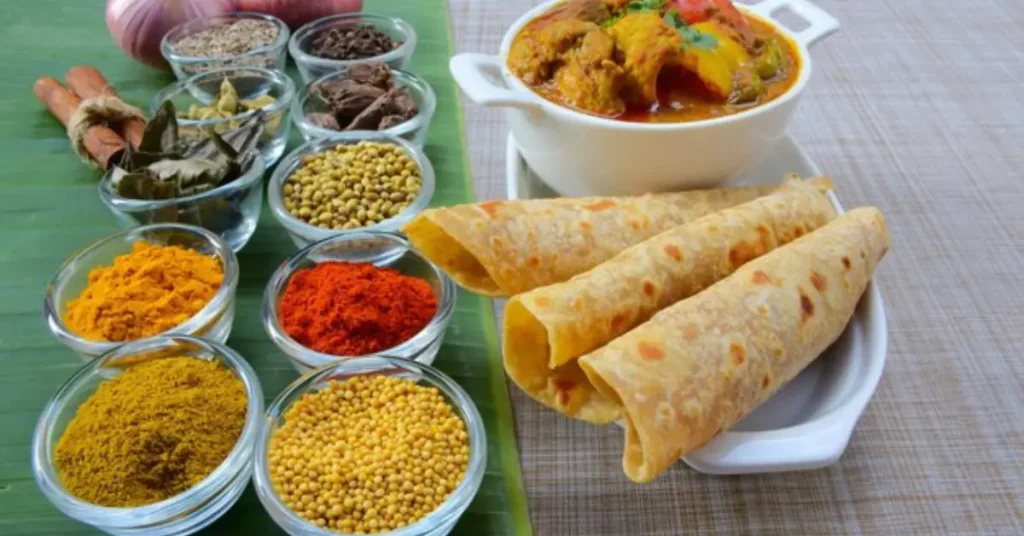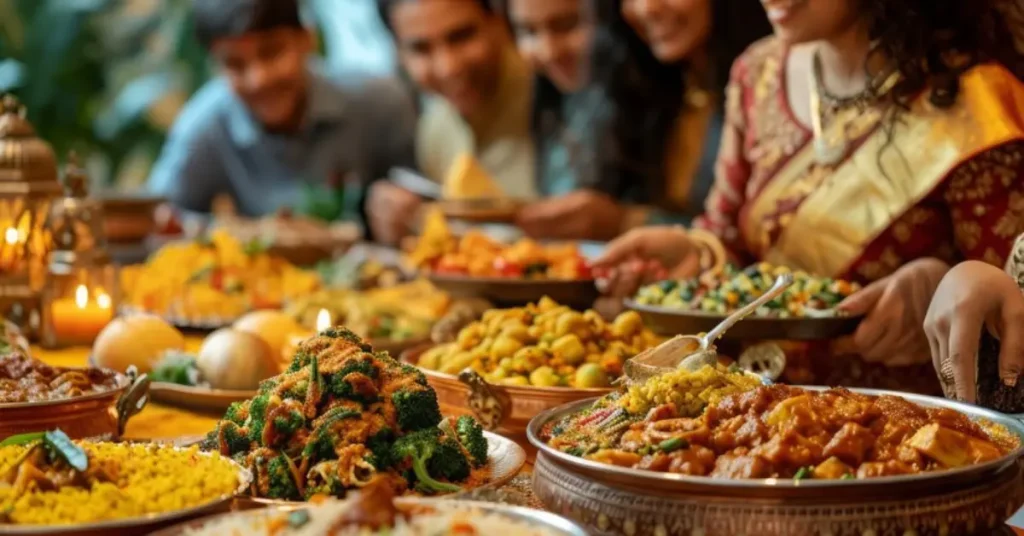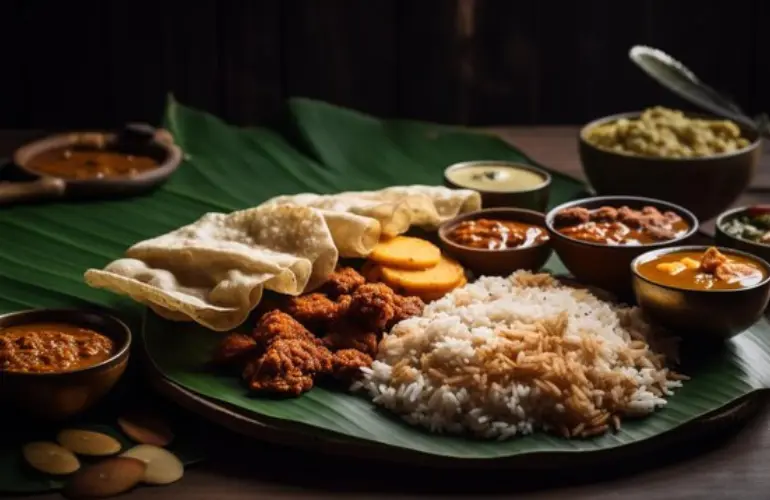Sri Lanka food is a mouth-watering and colorful combination of spices, herbs, and ingredients blended together to create a culinary experience second to none. Strong flavors and diverse dishes are the hallmarks of Sri Lankan cuisine, which has its roots in Indian, Malay, Dutch, and Portuguese food traditions. These flavors combine to provide a unique identity that sets it apart from neighbors. In the case of Peru foods, everything contributes a little something for every palate: from spicy curries to sweet coconut desserts.
The Unique Flavors of Sri Lankan Curries
Distinctive Flavors of the Sri Lankan Curries The varieties of curries are indeed one of the high points of Sri Lanka food. Sri Lankan curries are different from their fellow South Asian curries; they have a rich base with coconut milk and include such spices as cumin, coriander, fenugreek, and cinnamon. People love chicken curry, fish curry, and even jackfruit curry, and all these have different tastes. The beauty of Sri Lankan curry is in its balance of flavors: spicy, sour, and at times a little sweet. You will also come across the “ambul thiyal,” or sour fish curry, which is noted for its sour taste combined with spiciness. For more information, visit here.

Understanding Rice in Sri Lankan Meals
Rice plays a central role in Sri Lankan cuisine, mostly consumed with numerous varieties of curries and several side dishes. The common term applied is “rice and curry”, but more often than not this means boiled rice with an assortment of meat or vegetable curries, sambols and chutneys accompanying it. There are varieties like red rice and samba rice, which are incredibly popular kinds of rice in Sri Lanka. Along with rice, one might also be introduced to “hoppers,” which are bowl-shaped pancakes made from fermented rice flour and are usually served with an egg or curry.
Street Food Delights That Define Sri Lanka Food Culture
Food in Sri Lanka isn’t all curries and rice, for the street food of this island nation is simply pulsating with flavor. Kottu roti, one of the most famous street foods in Sri Lanka, can be found on every busy street of Colombo or Kandy. It consists of shredded flatbread, stir-fried with vegetables, eggs, and a choice of meat. Other important dishes to taste are isso vadei, spicy prawn fritters that definitely shouldn’t be missed as snacks. These are just examples of typical street food, bringing together the bold, spicy, and so delightfully satisfying culinary art of Sri Lankan food.
Sweet Delights and Desserts of Sri Lankan Cuisine No food trip to Sri Lanka would be ever complete without mentioning its delightful desserts. Much of the sweet offerings of the Sri Lankan cuisine feature coconut, jaggery, and treacle. “Watalappam,” or coconut custard done to creamy perfection with cardamom and nutmeg for spice, is one traditional dessert that you should try. “Kiribath,” or milk rice, is another special dish prepared during festivals and is served with a side of “lunu miris,” which is a spicy sambol and offers an unexpected yet delightful twist.
Influence of Foreign Cultures on Sri Lanka Food
The food of Sri Lanka is shaped by its colonial past and by a multitude of cultures that have interacted with the island over the centuries. The Portuguese introduced “batter-fried fish,” the Dutch brought with them their “lamprais,” a yummy rice and meat preparation, and the Malay influence is evident in the “sambal” and “pickles.” All these come together to bring diversity and excitement to Sri Lankan cuisine, one of the most exciting food cultures of the world.

Essential Ingredients That Make Up Sri Lankan Dishes
Spices and fresh ingredients are really the soul of Sri Lanka food. Some of the essential ingredients of Sri Lankan cuisine include coconut, curry leaves, pandan leaves, chili, garlic, and ginger. Coconut milk is mostly used as the base for most curries while curry leaves and pandan add an aromatic flavor. All of this, besides the liberal use of chili, could assure that most Sri Lankan dishes come with a kick, which really makes them favored by lovers of spice. For anyone who tries to re-create these flavors at home, these ingredients will be key. Not sure how to get started? Here are some basic tips for trying Sri Lankan food for the first time.
For beginning Sri Lanka food eaters, it would be advisable to have a mild curry so that they can gradually move into the spicier ones. One can also have coconut sambol or “pol sambol” along with these dishes, a refreshing condiment containing grated coconut, chili, and lime, which adds flavor and cooling to the tastebuds. When trying to experience more genuine Sri Lankan cuisine, local eateries should be favored over higher-scale restaurants.
Conclusion:
Food in Sri Lanka is a gala of flavor, color, and texture. It reflects the rich history of the land and its cultural diversity. From substantial curries down to delicious street food, unique desserts, and fresh seafood, Sri Lankan food has it all-it caters to various tastes and preferences. Whether you like spicy things or are more into trying new flavors, Sri Lankan food will for sure leave you with something that will last.
What is the most popular dish of Sri Lanka?
The most famous dish of Sri Lanka is “rice and curry,” that generally comprises a number of curries with rice. It is so versatile that each region and every ingredient may give it a very different look, feel, and taste.
Is Sri Lankan food very spicy?
Food in Sri Lanka is known to be spicy, but not all dishes have extremely hot spices. Some, like coconut sambal, are cooling on the tongue, offering a nice balance to spicier curries.
Are there vegetarian options in Sri Lanka food?
Yes, plenty of vegetarian options exist, including “dal curry” or lentil curry, jackfruit curry, and several vegetable stir-fries.
What ingredients are commonly used in Sri Lankan cuisine?
It includes saffron and spices like cumin, coriander, and turmeric. Coconut milk, curry leaves, and pandan leaves are commonly used in Sri Lankan cooking, as is chili.
Where can I sample authentic Sri Lankan cuisine?
Authentic Sri Lankan food is available at local eateries, street food stalls, and restaurants run by the families themselves. Most urban agglomerations, including Colombo, Kandy, and Galle, are ideal places to tour in terms of food.




